Most people have to keep track of at least a few keys. The easiest way to do that is to just keep them all on one key ring. But the more keys you have, the bulkier the ring is to carry in your pocket. Here’s an alternative design for holding and organising your keys that’s a little more efficient.
The design of this key holder is very similar in construction to a Swiss Army Knife. The keys are arranged on two parallel bars. Each key can be rotated into the handle for compact storage and rotated back out for use.
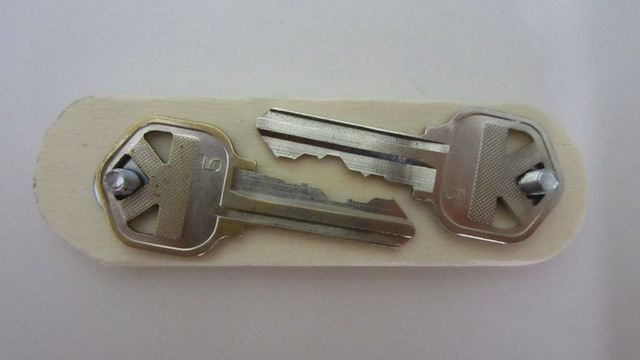
Step One: Materials and Tools
- Two pieces of wood (about 1″ x 3.75″ x 1/8″ each)
- Thin sheet metal (about 2″ x 3.75″)
- Two #8 machine screw lock nuts
- Two #8 machine screws, 3/4″ long
- Ten #8 machine screw washers
- Glue that’s able to bond wood to metal
- Wood stain (optional)
- Polyurethane (optional)
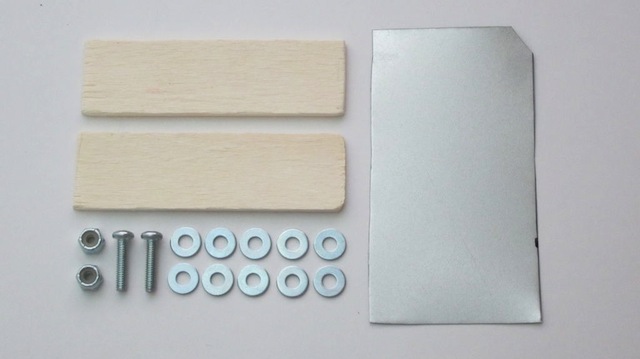
Tools
- Drill and bit set
- Tin snips
- Sand paper/sanding block
- Small binder clamps
- Pencil
- Ruler
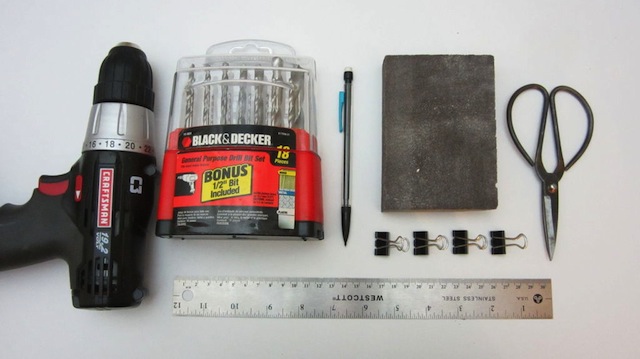
Tip: Paint stir sticks are a good size to be used for the wood pieces. For the sheet metal, I used a baking tray that I found at a discount store.
Step Two: Cut The Wood And Metal To Shape
Use whatever rounded object you have readily available to trace a semicircle onto each end of the wood pieces. Then using a saw or knife, cut along the outline. Trace the shape of these wood pieces onto the sheet metal. Using a pair of tin snips cut out two pieces of sheet metal that are a little smaller than the outlines.
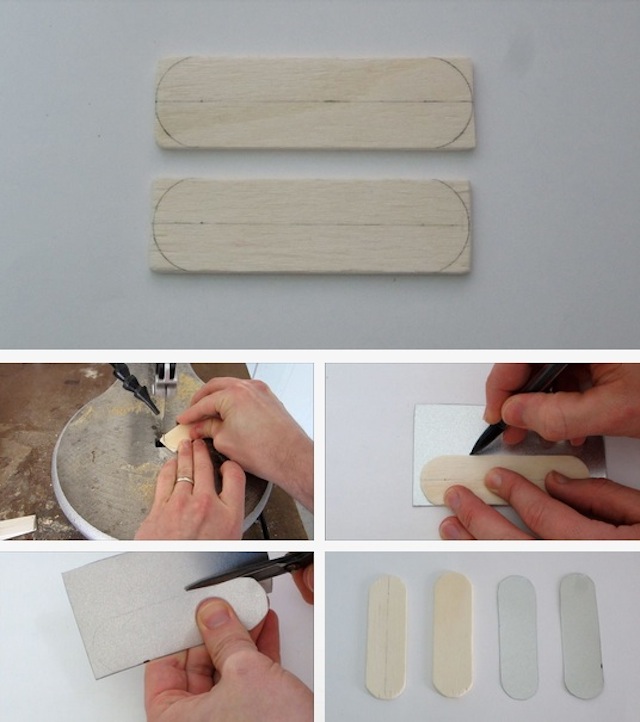
Step Three: Drill The Bolt Holes
Make a stack of the two wood pieces and the two metal pieces. Make sure all the pieces are centered, and hold them together with a binder clamp. Mark the centres of the semicircle on each end. They should be about 2.75 inches apart. Using a 3/16 drill bit, drill through all four layers at one of these points. Insert a screw into this hole to help keep the layers lined up. Then drill the second hole. Remove the two metal pieces and re-drill the holes in the wood pieces so that the holes are wide enough to accommodate the head of the machine screw and the lock nut respective. You may wish to wrap the wood pieces in tape to prevent them from splitting when drilling larger holes. When you’re done cutting and drilling, sand all the surfaces and edges smooth.
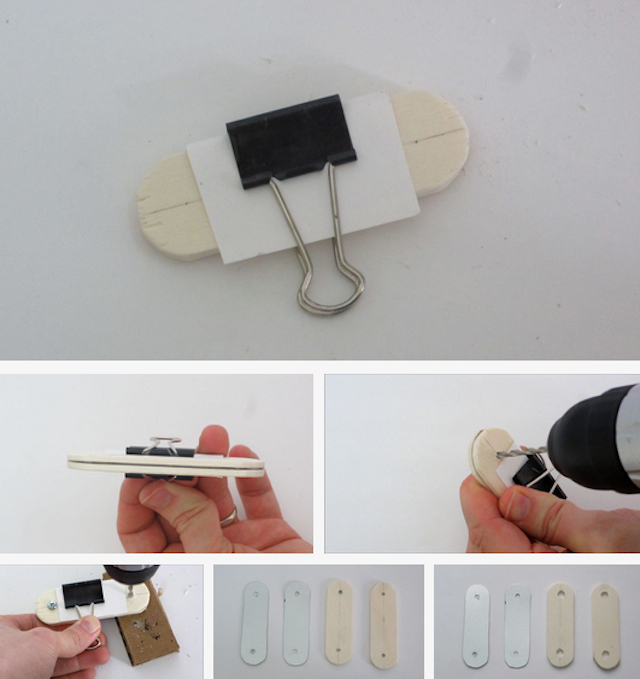
Step Four: Assemble the Frame
Insert the machine screws through the holes in the metal plates. Then add the washers and keys. Four keys and five washers will fit perfectly on a 3/4-inch screw in the sequence (sheet metal, washer, key, washer, key, washer, key, washer, key, washer, sheet metal). Using this sequence, two keys and three washers will fit on a 1/2-inch screw. Likewise, six keys and seven washers will fit on a 1-inch screw.
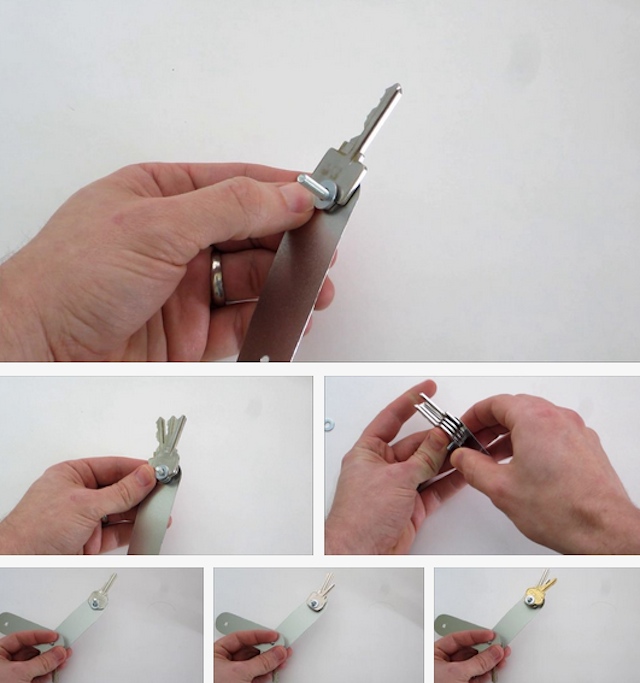
Alternatively, you can conserve space a little bit by eliminating the washers, but the keys will tend to stick on each other. If you have an odd number of keys you can fill the space with two washers. When you’re done adding keys and washers, add the second piece of sheet metal. Then, tighten everything together with the two lock nuts.
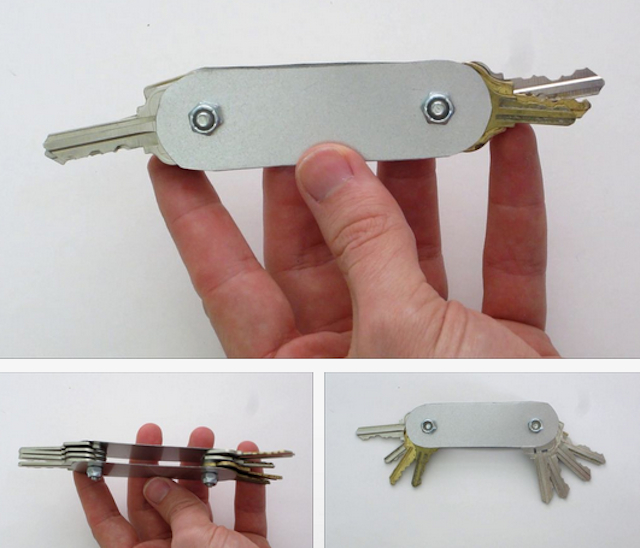
Step Five: Glue The Wooden Panels
Apply a thin layer of glue to the outside of one plate and press on the wooden panel. Do the same for the second panel, then use binder clips to hold everything in place while the glue dries. You may wish to add a layer or two of card stock to prevent the clamps from denting your wood panels.
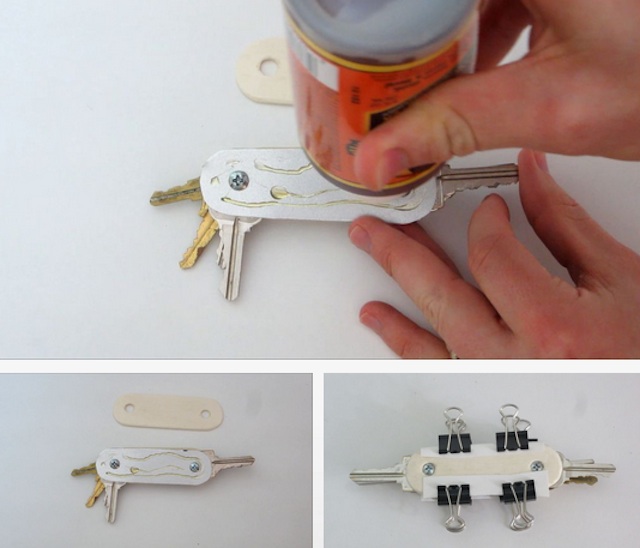
Step Six: Apply Paint And Polyurethane (Optional)
Once the glue dries, your Swiss Army Key Ring is ready to use, but I chose to take it a few steps further by applying stain and polyurethane to make it look a little nicer. To apply the stain I just used a piece of cheesecloth. When the stain was completely dry, I applied the polyurethane with a sponge brush.
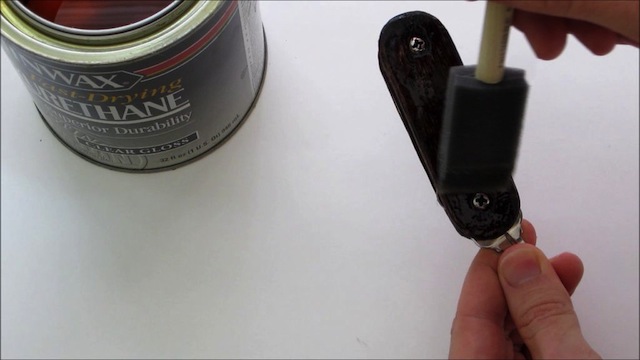
Step Seven: Done!
This design saves space in two ways. First, the keys are mounted parallel to each other and don’t fan out. Second, the double folding design allows the blades of both sets of keys to fit within the space of the handle.
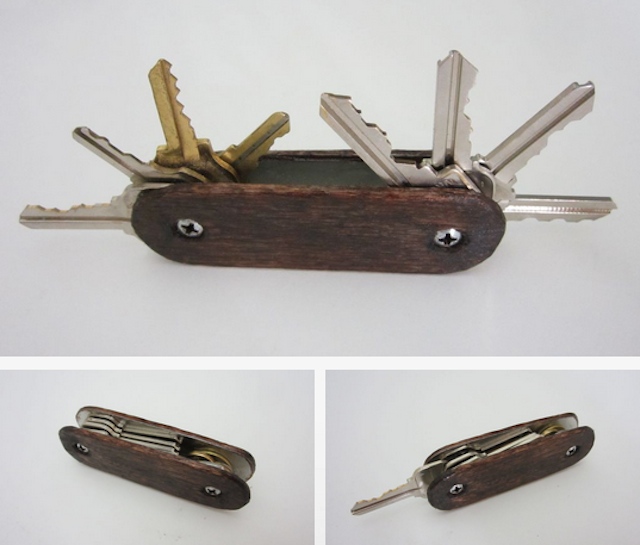
This design is also a better way of organising keys. Because they’re always in the same orientation, it’s faster and easier to find the one that you need.
Swiss Army Key Ring [Instructables via MAKE]
Jason Poel Smith is a contributor at MAKE.
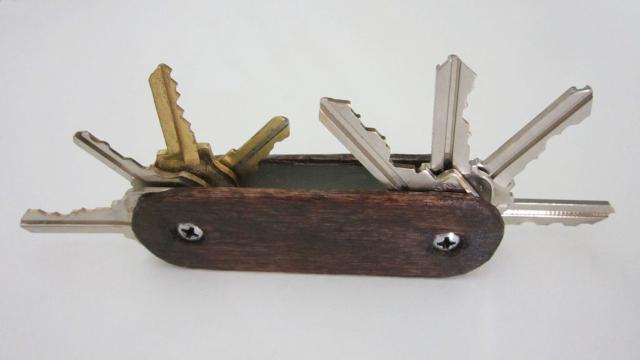
Comments
5 responses to “How To Make A Swiss Army Key Ring”
Er, just one question… How do you get the keys out, when the ‘penknife’ is closed? (i.e. when when all the keys are in the closed position)
Usually, the blades will have a ridge you can grip on with your fingernails (even then its a struggle sometimes) to pull them out. These don’t.
Really like the idea, though.
That is actually pretty cool, and doesn’t look all that hard.
Only question I have (and its similar to questions people had about that screwdriver one recently) is how does it put up under the strain of consistent use?
good luck going through an airport with that…
Re getting the keys out.
Four keys + five washers = over 10mm thickness.
Enough gap to push keys out with finger ?
Suggest don’t try this idea with blades….
Or just go to keysmart.com and buy one.